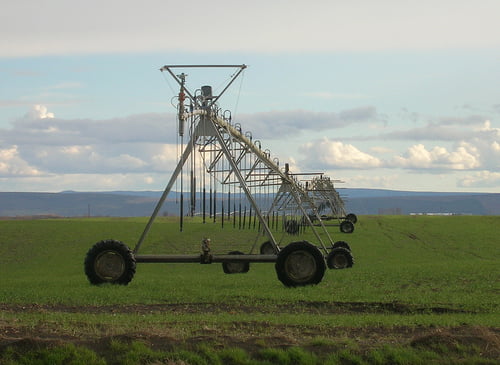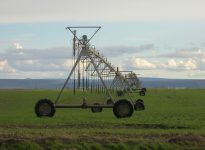The Millennium Development Goals can’t cover everything. It’s not so much a flaw in the goals as an unfortunate fact of life. One thing they don’t cover is irrigation water. Drinking water, yes. Sanitation, yes. Irrigation water, no.
So, irrigation water didn’t come up at the MDG summit this week. Even Water Aid’s giant poo doesn’t touch on irrigation water.
In about ten years, we’re going to regret that.
We need clean irrigation water, free of bacteria and free of heavy metals. We need abundant irrigation water if we’re going to meet the food security challenges of the future. Using crops that require less water will be important, too, but that switch alone won’t do it. We are going to need to irrigate; irrigated cropland is three and a half times as productive as rain-fed cropland. According to the FAO, “Half or even two-thirds of future gains in crop production are expected to come from irrigated land.”
There are two big things that matter about irrigation water. One we need to use the right amount – enough to grow the crops to maintain food security, but not so much that we deplete the world’s water supply. Two, we need irrigation water that is free or harmful bacteria or dangerous chemicals.
Getting quantities right is going to mean developing new technology and spreading the use of existing technology. Lower use irrigation techniques can improve crop productivity and also decrease the irrigation water needed. Crops that are less thirsty reduce the demand for water, too. Lining and covering irrigation canals can reduce water waste and allow new lands to be irrigated.
Your major concern with keeping irrigation water clean is avoiding fecal contamination. If you get sewage waste into irrigation water, it can contaminate crops and trigger widespread sickness in the people who consume the crops. It’s the likely culprit for the bacterial outbreaks we have seen in US produce. That relates directly related to waste disposal – both human and livestock.
Chemical contamination of irrigation water comes from industrial pollution of groundwater, natural sources, or the abuse of agricultural chemicals. Major contaminant risks include lead and arsenic. In Bangladesh, for example, rice is being contaminated with arsenic, lowering its nutritional value and even causing human toxicity. It’s the result of wells drilled into rock that contains naturally occurring arsenic. In India, vegetables grown in soil irrigated by contaminated wastewater put human health at risk.
Keeping chemicals out of irrigation water means tight pollution controls on industry, frequent testing of irrigation water quality, and education and regulation on the use of agricultural chemicals. Very few of these things are actually happening right now.
It’s a grim picture, and I don’t have an optimistic ending to close with. Irrigation water matters, and it’s being overlooked.

